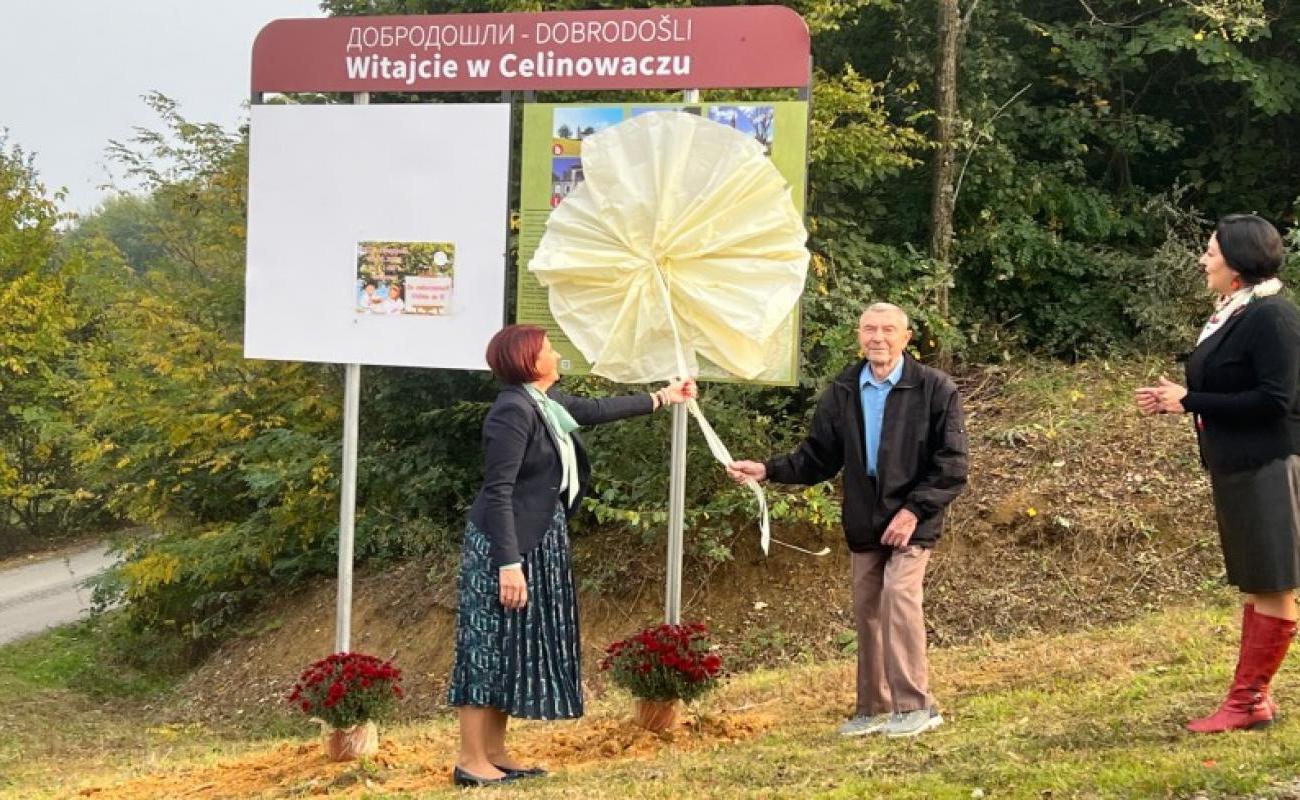Strengthening national minorities’ languages and cultures with the support of the European Union and the Council of Europe

46 topographic signs in the national minority languages were presented in Prnjavor, Srbac, Gradiška and Laktaši last week. The signs, placed with the support of the European Union and the Council of Europe, vary from those having traditional place names in respective national minority language to those signs with topographical indication marking and promoting cultural heritage of national minorities such as churches, cemeteries, welcome signs and info boards.
Bosnia and Herzegovina, as the Council of Europe member state, has signed two conventions setting out the basic principles of protecting the rights of all 17 recognised national minorities - the European Charter for Regional or Minority Languages (ECRML) and the Framework Convention for the Protection of National Minorities (FCNM). The Council of Europe’s monitoring bodies as well as the Committee of Ministers, through its recommendations, have on several occasions reminded Bosnia and Herzegovina that the placing of topographical signs in national minority languages is an important step towards fulfilling its obligations.
Representatives from all local communities thanked for the support in enhancing the right for national minorities to use their languages in the public spaces and they declared their commitment to continue doing so, among others to ensure that placed signs will be maintained by them.
Saliha Đuderija, Assistant minister, Ministry for Human Rights and Refugees BiH, said: “Topographic marking of settlements and cultural and historical monuments that are related to members of national minorities is a good way of highlighting multicultural values in communities where national minorities live. Especially in Bosnia and Herzegovina, we know what the "Signs Along the Road" mean.”
Angela Longo, Programme Manager at the Council of Europe Anti-discrimination Department, underlined that the Council of Europe and European Union are very pleased that local self-governments recognised the importance promoting historical and cultural heritage of national minorities traditionally living in these areas but also showing openness for an inclusive and diverse society. “Such initiatives give tangible example on the concrete effects of the standards and mechanisms of the Council of Europe at the local level, so that human rights are not exclusively perceived as on the paper”, said Longo.
National minority representatives expressed their satisfaction with posted signs and highlighted the hope that similar activities will take place in the future.
Placing signs was implemented in co-operation with the informal group Minority Co-ordination Board that is chaired by the Ministry for Human Rights and Refugees of Bosnia and Herzegovina (BiH) and respective local self-governments. Further three signs will be placed by the end of October in Bijeljina. The development and placing of signs was supported under the joint European Union and Council of Europe action “Promotion of diversity and equality in Bosnia and Herzegovina”, which is part of the “Horizontal Facility for the Western Balkans and Turkey 2019 – 2022” programme.
